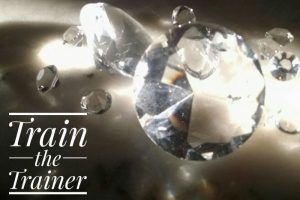Three essential tips for trainers
During my Train the Trainer events, the most learning happens during the practical, where each delegate delivers a short training presentation, followed by personal reflection and honest, respectful and constructive feedback from peer group and tutor.
And three key points shine out. If you’re an aspiring, new or developing trainer:
Slow down
You’re talking about something you know well, may feel excited and passionate about, plus a few nerves.
All this can make you speed up.
Remember it’s not about you. Their brains need to process new information, compare it to what they already know – and maybe deal with resistance to the change it might represent.
So slow down. Breathe out. Breathe in from your diaphragm. Allow the pause.
It will help them take it all in, process it and retain it.
Show us
What’s the best way to describe a dinosaur – with words or a picture?
Our brains like images. Pictures can trigger understanding, illustrate a concept, fire up emotional reactions.
All those PowerPoint slides full of bullet points and paragraphs of text, your script on the screen … they aren’t visual. They’re just another voice talking at them at the same time as you, which confuses.
So go through those slides, edit out the text and add in some powerful pictures.
You and your presentation will be more memorable.
Involve us
‘What’s in it for me?’
That’s in all our minds.
‘How does this affect / impact / threaten / improve / advantage MEEEE?’
Adults come to learning with a brain full of existing stuff that the new information has to join, challenge and change. This can be an effort for trainer and learner.
So ask us questions. What do we know? What do we already think? Makes us feel comfortable, less vulnerable.
Tell us stories. We’re a story-loving species, and the storytelling skill is a great trainer asset. Links to something familiar and relateable, sets up mental images, captures interest, engages the emotions.
And give us something to DO. Activity and movement perks us up, gets us interacting and sparking interest in the moment.
For more about my Train the Trainer workshops and programmes Contact

